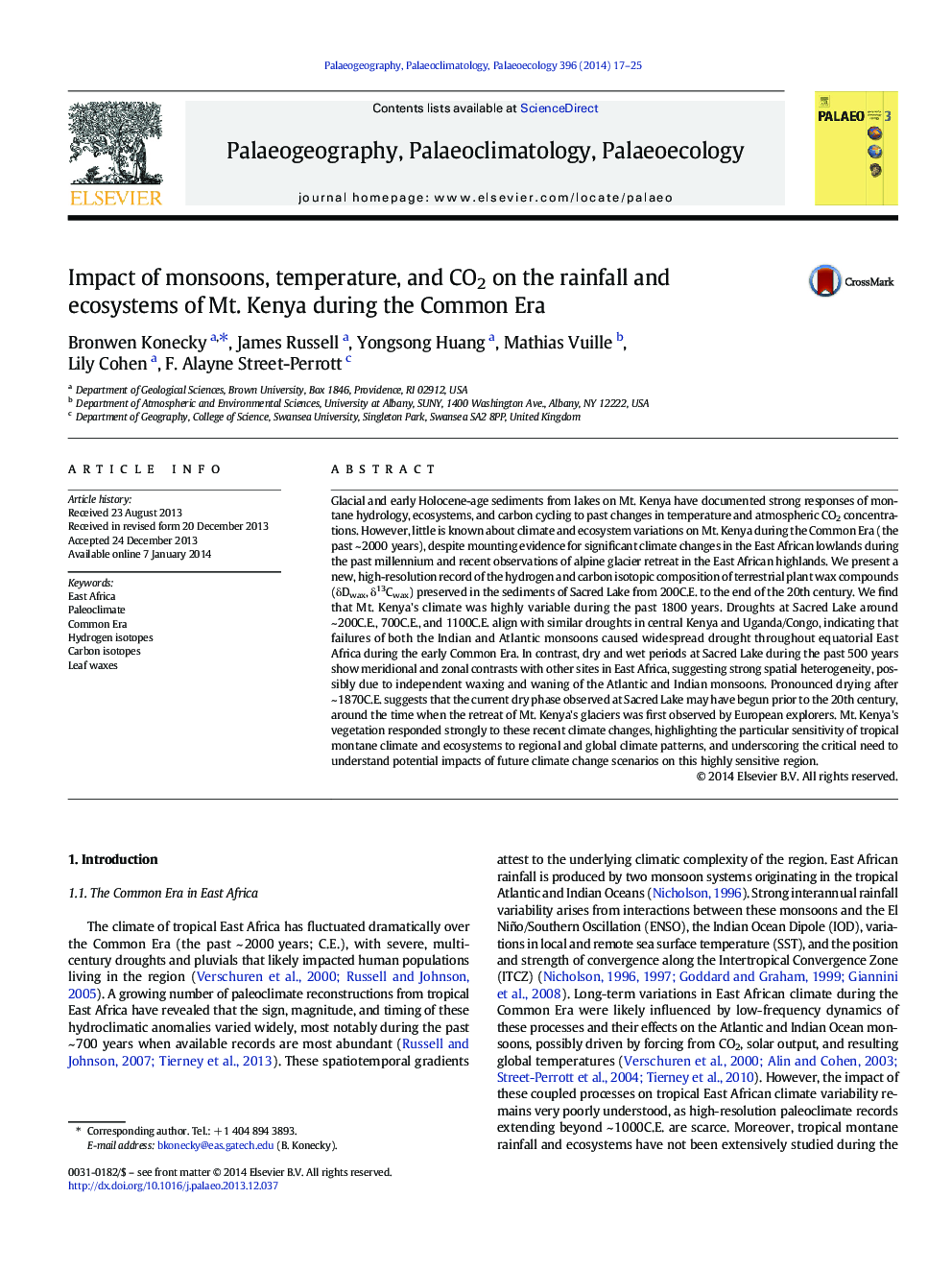| Article ID | Journal | Published Year | Pages | File Type |
|---|---|---|---|---|
| 4466404 | Palaeogeography, Palaeoclimatology, Palaeoecology | 2014 | 9 Pages |
•Rainfall variations on Mt. Kenya and western East Africa coincided until ~ 1700C.E.•Indian Ocean moisture transport drove regional climate until recent centuries.•Post-19th century climate change drove aridification, C3 plant expansion on Mt. Kenya.
Glacial and early Holocene-age sediments from lakes on Mt. Kenya have documented strong responses of montane hydrology, ecosystems, and carbon cycling to past changes in temperature and atmospheric CO2 concentrations. However, little is known about climate and ecosystem variations on Mt. Kenya during the Common Era (the past ~ 2000 years), despite mounting evidence for significant climate changes in the East African lowlands during the past millennium and recent observations of alpine glacier retreat in the East African highlands. We present a new, high-resolution record of the hydrogen and carbon isotopic composition of terrestrial plant wax compounds (δDwax, δ13Cwax) preserved in the sediments of Sacred Lake from 200C.E. to the end of the 20th century. We find that Mt. Kenya's climate was highly variable during the past 1800 years. Droughts at Sacred Lake around ~ 200C.E., 700C.E., and 1100C.E. align with similar droughts in central Kenya and Uganda/Congo, indicating that failures of both the Indian and Atlantic monsoons caused widespread drought throughout equatorial East Africa during the early Common Era. In contrast, dry and wet periods at Sacred Lake during the past 500 years show meridional and zonal contrasts with other sites in East Africa, suggesting strong spatial heterogeneity, possibly due to independent waxing and waning of the Atlantic and Indian monsoons. Pronounced drying after ~ 1870C.E. suggests that the current dry phase observed at Sacred Lake may have begun prior to the 20th century, around the time when the retreat of Mt. Kenya's glaciers was first observed by European explorers. Mt. Kenya's vegetation responded strongly to these recent climate changes, highlighting the particular sensitivity of tropical montane climate and ecosystems to regional and global climate patterns, and underscoring the critical need to understand potential impacts of future climate change scenarios on this highly sensitive region.
